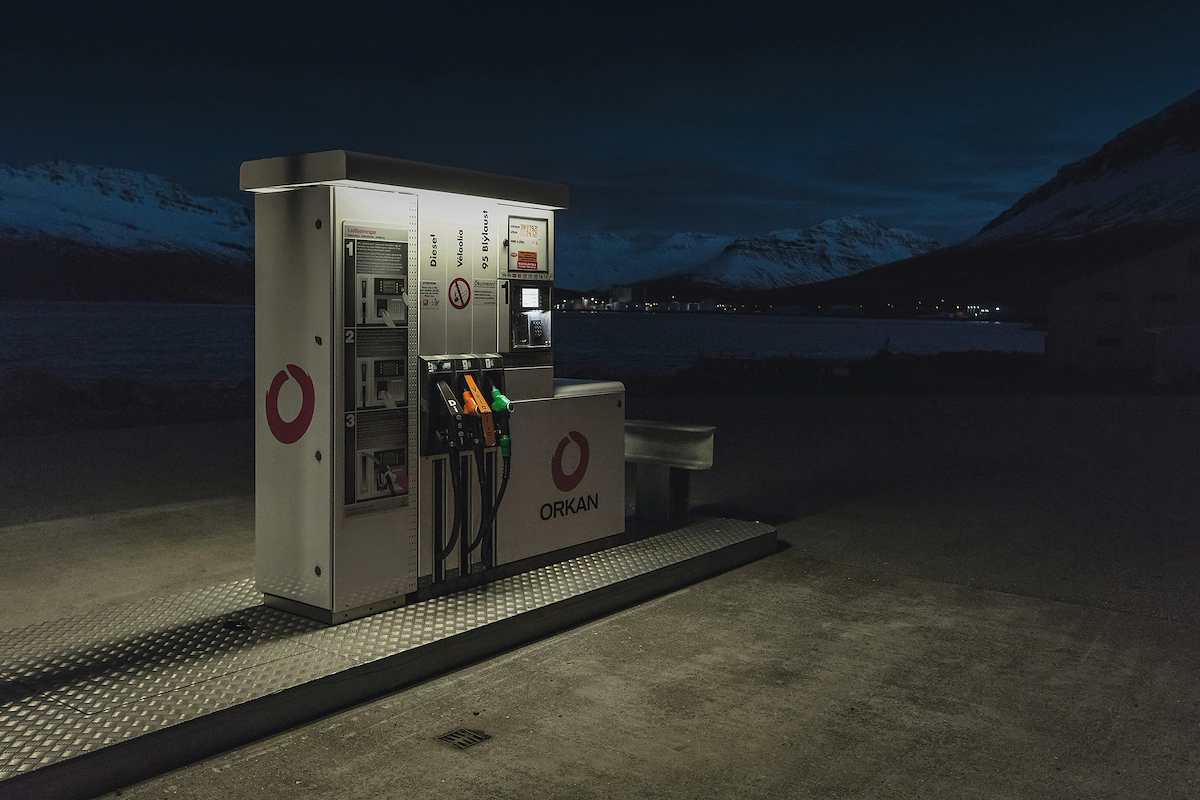Starting a consignment business is a rewarding venture that blends a passion for quality goods with smart business acumen. The market is quite accessible for newcomers and the potential for profit is strong, but that accessibility doesn't guarantee success.
This guide will take you through the practical steps of validating your business concept, obtaining the right permits, selecting a location, and building supplier relationships to help you launch a successful consignment business in the U.S.
Step 1: Validate your business idea and plan your finances
Define your niche and market
First, define your niche. Will you sell designer apparel, vintage furniture, or children's clothing? Your choice dictates your customer base and location. A frequent misstep is to be too broad; specialization helps you stand out and attract dedicated consignors and buyers.
Next, research local demand. Spend a weekend visiting other consignment and thrift stores. Observe foot traffic, what sells, and pricing. You can also check online marketplaces like The RealReal or ThredUP to see national price points for items you plan to carry.
Analyze competitors and budget for startup
Use Google Maps to list all local competitors. Review their websites and social media to understand their marketing. Note their consignment split, which is typically 40-60% for the consignor. This information helps you create an attractive offer for your future suppliers.
Speaking of costs, a physical store requires a notable investment. Expect to spend between $5,000 and $20,000. This covers your first month's rent ($2,000-$7,000), business permits ($100-$500), and store fixtures like racks and hangers ($1,000-$4,000).
Do not forget software and marketing. A point-of-sale system that tracks consignors and inventory will cost about $50-$150 per month. Set aside at least $500 for initial marketing efforts to announce your grand opening.
Here are 3 immediate steps to take:
- Define a specific niche for your store, such as luxury accessories or mid-century modern furniture.
- Visit at least two local competitors to analyze their pricing and consignment terms.
- Create a detailed startup budget that lists estimated costs for rent, fixtures, and software.
Step 2: Set up your legal structure and get licensed
Choose your business structure
You might want to consider a Limited Liability Company (LLC). It separates your personal assets from business debts and offers pass-through taxation. A sole proprietorship is simpler but leaves your personal assets exposed, a risk you may not want to take.
Secure federal, state, and local licenses
First, apply for a free Employer Identification Number (EIN) on the IRS website. You will need this for banking and taxes. The process is quick and online. With your EIN, you can register your LLC with your Secretary of State, which costs between $50 and $500.
You also need a seller's permit from your state's department of revenue to collect sales tax. For your physical store, your city or county requires a general business license and a Certificate of Occupancy, which confirms the space is safe for public use.
A mistake many new owners make is using a generic consignor agreement. Your agreement is your main defense against disputes over payments or damaged goods. It is wise to have a lawyer review it to ensure it follows state commercial codes.
Here are 4 immediate steps to take:
- Decide on a business structure like an LLC and file the paperwork with your state.
- Apply for a free Employer Identification Number (EIN) directly from the IRS.
- Contact your state and city to apply for a seller’s permit and business license.
- Draft a consignor agreement that details payment splits, terms, and liability.
Step 3: Insure your business and manage risk
Secure the right insurance coverage
With your legal structure in place, the next step is to protect your business. General liability insurance is your first priority. It covers claims like customer slips and falls. You should look for a policy with at least $1 million in coverage, which often costs between $400 and $900 annually.
Next, you need commercial property insurance. This protects your store’s fixtures and any inventory you own from events like fire or theft. Premiums can range from $1,000 to $3,000 per year, depending on the value of your assets and your location.
A detail many new owners miss is that standard property insurance may not cover consigned goods because you do not own them. You might need a specific add-on called bailee's coverage to protect against damage or theft of a consignor's items. This is a key protection against disputes.
When you shop for policies, consider providers like The Hartford, Hiscox, or Next Insurance, as they specialize in small business needs. If you plan to hire employees, you will also need workers' compensation insurance, which is a state requirement.
Here are 4 immediate steps to take:
- Request quotes for a $1 million general liability policy.
- Ask insurers specifically about bailee's coverage for your consigned inventory.
- Compare commercial property insurance policies from at least two providers.
- Research your state’s workers' compensation laws if you intend to hire staff.
Step 4: Choose a location and equip your store
Aim for a retail space between 1,000 and 2,500 square feet in an area zoned for commercial use. High foot traffic and good visibility are your best friends. Look for spots near cafes, boutiques, or busy town centers where your target customers already shop.
When you negotiate your lease, ask for a tenant improvement allowance. This is money from the landlord to help pay for renovations. A common oversight is not having enough storage. Make sure your space has a back room for unprocessed inventory, ideally 20% of your total square footage.
Equip your store
Your main costs will be fixtures. Budget for commercial-grade clothing racks ($100-$300 each), quality hangers (about $0.50 each in bulk), and a checkout counter. A secure, lockable display case for jewelry or high-value items is also a smart purchase, often costing $200-$800.
You will also need a tagging gun ($20-$40) and thousands of tags to start. For suppliers, Uline or Store Supply Warehouse are good options for fixtures and packaging. They do not have high minimum orders, which helps manage your initial cash flow.
Here are 4 immediate steps to take:
- Identify three potential retail locations in commercially zoned areas.
- Ask prospective landlords about a tenant improvement allowance.
- Create a budget for fixtures, including racks, hangers, and a display case.
- Browse Uline or Store Supply Warehouse to price out your initial supplies.
Step 5: Set up your payment system
Choose your payment processor
Your customers will expect to pay with credit, debit, and digital wallets, so you need a simple system. A frequent misstep is to choose a processor with high monthly fees or clunky hardware that complicates checkout and adds unnecessary costs.
Pay close attention to transaction rates. Many providers charge between 2.5% and 3.5% per sale, plus equipment rental fees. These costs add up quickly and can eat into your profits, so it pays to compare options before you commit.
For consignment businesses that need to accept payments on-site or on-the-go, JIM offers a streamlined solution. With JIM, you can accept debit, credit, and digital wallets directly through your smartphone, just tap and done.
At just 1.99% per transaction with no hidden costs or extra hardware needed, it is particularly useful for sidewalk sales or pop-up events. This is a significant saving compared to the typical 2.5% to 3.5% rates from other providers.
- Get Started: Download the JIM app for iOS.
- Make a Sale: Type the sales amount, hit sell, and ask your customer to tap their card or device on your phone.
- Access Funds: Your money is available right on your JIM card as soon as the sale is done, with no need to wait for bank transfers.
Here are 3 immediate steps to take:
- Compare transaction fees from at least two different payment processors.
- Decide if you need a mobile payment option for pop-up shops or market stalls.
- Download the JIM app to see if it fits your business needs.
Step 6: Secure funding and manage your finances
Find the right funding
SBA Microloans are a strong option for consignment startups. These loans go up to $50,000, with interest rates often between 8% and 13%. Lenders prioritize a solid business plan over a long credit history, which is helpful for new entrepreneurs.
You might also consider a business line of credit from a local bank or credit union. This gives you flexible access to cash, which is perfect for managing consignor payouts before your sales become predictable. Qualification often requires a good personal credit score.
Plan your working capital
One thing that catches new owners off guard is underestimating cash needs. You will pay consignors for sold items before your revenue stream is consistent, so a healthy cash reserve is not just a safety net, it is an operational necessity.
For the first six months, you should plan for $15,000 to $25,000 in working capital. This amount covers rent, utilities, marketing, and those initial consignor payouts until your store builds a steady sales rhythm.
Here are 3 immediate steps to take:
- Research SBA Microloan lenders in your area and review their application requirements.
- Ask your local bank about its options for a business line of credit.
- Calculate your working capital needs to cover at least your first six months of expenses.
Step 7: Hire your team and set up operations
Hire your first employees
Your first hire will likely be a Consignment Associate. This person handles inventory intake, pricing, customer service, and sales. Plan for a pay rate between $15 and $20 per hour. While no specific certifications are required, you should look for candidates with prior retail experience.
A frequent misstep is to hire friends or family without formalizing the role. To prevent issues, create a clear job description with defined responsibilities and expectations before you make an offer. This ensures everyone is on the same page from the start.
Manage daily operations
With staff on board, you need to manage schedules and performance. You can use scheduling software like Homebase or When I Work to build efficient schedules and track labor costs. Your goal is to keep labor expenses between 15% and 20% of your total revenue.
As you grow, a good benchmark is to aim for $120,000 in annual sales per full-time employee. Also, make sure your team understands your consignment policies. Proper training on your intake process is key to maintaining inventory quality and strong consignor relationships.
Here are 4 immediate steps to take:
- Draft a job description for a Consignment Associate with clear duties.
- Review scheduling platforms like Homebase to find a good fit for your budget.
- Outline a one-page training guide on your consignment intake process.
- Set a sales-per-employee goal to guide future hiring decisions.
Step 8: Market your store and acquire customers
Create a local buzz online
First, claim and complete your Google Business Profile. This is the single most effective way for local shoppers to find your address and hours. Next, pick one social media platform, like Instagram, and focus your efforts there. Post high-quality photos of new arrivals 4-5 times per week.
A frequent oversight is marketing only to buyers while you forget about consignors. You need both. Create separate posts that speak to consignors, perhaps highlighting your consignment split or showcasing a high-value item that sold quickly to prove you deliver results.
Use events to drive foot traffic
Your grand opening is your first major marketing event. Promote it for two weeks on social media and with flyers in nearby cafes. You might offer a 10% discount or a free tote bag for the first 50 customers to build excitement and a line out the door.
Once you are running, host small monthly events. A "Sip and Shop" evening or a themed sale can build a loyal community. Partner with another local business for cross-promotion. This strategy keeps your store relevant and encourages repeat visits from your best customers.
Here are 4 immediate steps to take:
- Set up and fully verify your Google Business Profile with photos.
- Plan your grand opening event, including a specific promotion.
- Draft two social media posts: one for buyers and one for potential consignors.
- Choose one social media platform and schedule your first week of content.
Step 9: Set your pricing strategy
Choose your pricing model
Your pricing model determines your profit and consignor satisfaction. The most common split is 50/50, where you and the consignor each get half of the final sale price. For high-value items over $500, you might offer a more attractive 60/40 split in the consignor’s favor.
A mistake some owners make is to price items based on emotion or attachment. Instead, use data. Check eBay’s “sold listings” filter or The RealReal to find the current market value for similar items. This data-driven approach prevents disputes and ensures items sell.
Set prices and markdowns
For standard apparel, a good starting point is to price items at 25-35% of their original retail value. For example, a dress that originally cost $200 could be priced at $50-$70, depending on its condition. Create a pricing guide to maintain consistency across your team.
You also need a markdown schedule to keep inventory fresh. A typical plan is to reduce the price by 25% after 30 days, and 50% after 60 days. After 90 days, the item should be returned to the consignor or donated, as specified in your agreement.
Here are 4 immediate steps to take:
- Decide on your standard consignment split and a separate split for high-value goods.
- Research the sold prices for five key items in your niche on eBay.
- Create a one-page pricing guide with brand tiers and starting price points.
- Establish a 30, 60, and 90-day markdown and return policy.
Step 10: Maintain quality and scale your operations
To maintain a great reputation, you need strict quality standards. Create a physical checklist for inventory intake that every employee uses. It should specify no stains, odors, pilling, or missing buttons. A frequent misstep is to rely on memory, which leads to inconsistent quality on your sales floor.
Next, track your sell-through rate (STR), which is the percentage of items sold within a period. A healthy STR is 75% or higher within 90 days. If your rate drops below 60%, it is a sign that your pricing is too high or your intake standards are too loose.
Plan your growth
Use your data to decide when to expand. A good benchmark is to hire another associate once you consistently process over 100 new items per week. This prevents bottlenecks. You might consider a second location once you hit $400,000 in annual revenue with a stable 15% net profit.
When your inventory grows beyond 2,000 active items, spreadsheets become a liability. At this point, upgrade to consignment-specific software like ConsignPro or Ricochet. These systems automate consignor management and sales tracking, which is critical for scaling your operations efficiently.
Here are 4 immediate steps to take:
- Create a one-page quality checklist for all staff to use during intake.
- Calculate your sell-through rate for the last 90 days.
- Set a revenue or inventory-count trigger for your next hire.
- Request a demo from a consignment-specific software like Ricochet or ConsignPro.
Your consignment business thrives on trust. The key is to balance fair terms for your consignors with desirable items for your buyers. Get that right, and you build a loyal community on both sides. You have a solid plan, now it is time to execute.
And when you make that first sale, keep the checkout process smooth. JIM turns your smartphone into a card reader, so you can accept payments anywhere for a flat 1.99% fee without extra hardware. Download JIM and be ready from day one.















